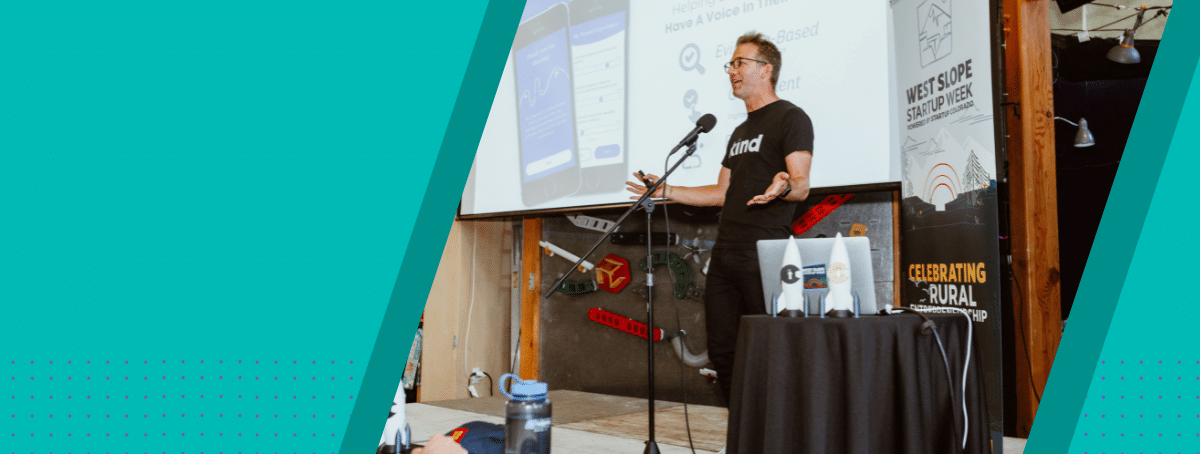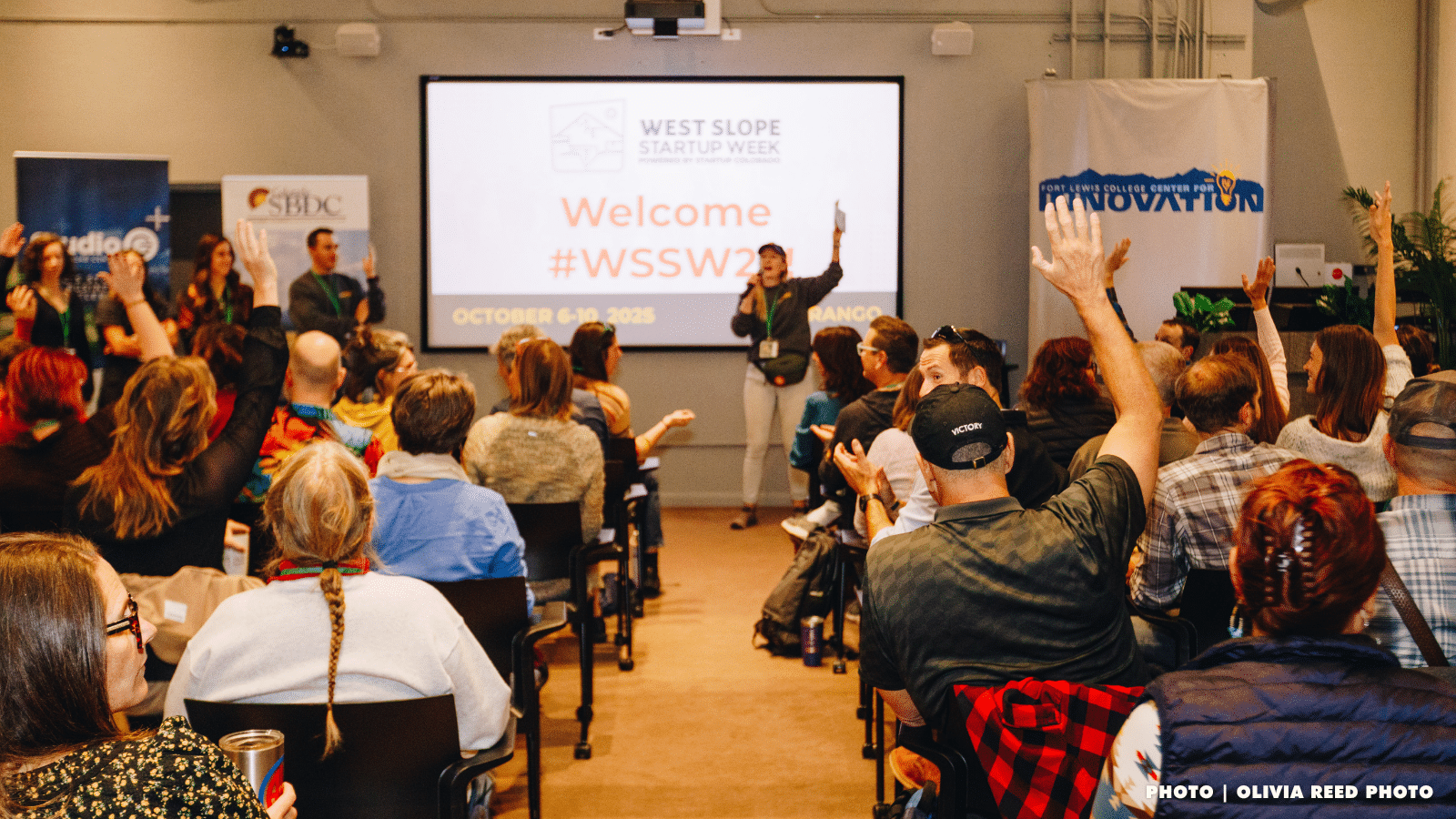By Margaret Hedderman
The startup pitch. It’s the stuff dreams are made of… and maybe nightmares, too. For many entrepreneurs, it’s a make it or break it moment. Which is why crafting a compelling pitch can feel daunting, but mastering it can open doors to partnerships, funding, and growth.
“Pitching is hard,” Diane Bailey, Head of Platform at She Raises Capital said. “But it’s a skillset that you have to learn… So the more that you can speak in a concise and compelling way, the better the chances are that your message is going to resonate with the right person.”
Recently, Diane—who supports founders in pitch strategy, investment readiness, and securing first customers—taught our Founder Coopetition // Growth Challenge participants how to tailor their pitches in order to resonate with any audience. In her session, she shared three major tips on crafting a pitch that lands with clarity and confidence. Here’s what every rural founder should know:
1. Tailor Your Pitch to Each Audience Type
When it comes to pitching, a one-size-fits-all approach won’t get you far. Diane emphasized that founders often encounter four primary audiences, each requiring a unique focus. These include investors, sales, strategic partners, and mixed audiences, such as those present at demo days. Each group has distinct needs and expectations, and effectively tailoring a pitch to these groups is crucial for success.
The Investor Pitch:
“What is it that investors want?” she asked. “They want to make money. They want to find good startups to fund so that they can make money.”
While many investors are passionate about supporting startups, their primary goal is securing a return on their investment. Founders should help investors envision the financial upside while addressing their concerns about potential risks.
“They’re making very risky decisions with other people’s money. So how do you de-risk that investment for them?”
De-risking your pitch means giving investors confidence in your business by demonstrating your credibility, your understanding of the market, and your ability to execute on your promises. Diane stressed the importance of creating a clear and structured investor pitch, one that “shows that this is the team that is going to execute on your vision and your mission.”
The Sales Pitch:
Unlike the investor pitch, which focuses on financial returns, the sales pitch centers on the customer’s problems and how the product offers a solution.
“The customer is looking to have their problems solved… So how do you tailor the pitch for that?” Diane asked.
Founders should “create value for the customer” by clearly demonstrating how the product addresses specific pain points.
Diane explained that a strong sales pitch goes beyond simply addressing the customer’s problem; it shows them how the product creates real value—whether that’s within their business, their personal life, or through a unique benefit tailored to their needs. In a successful sales pitch, it’s about making it clear that your product is the answer to a need or gap in the market.
The Strategic Partnership Pitch:
The strategic partnership pitch is distinct from both sales and investor pitches because it focuses on mutual benefits and collaborative goals. Diane said founders often approach potential partners with a “one-way transactional relationship,” assuming that access to the partner’s audience is the primary goal. However, she advised, a successful partnership pitch requires a “win-win” approach.
“What do the partners want? Well, they want to expand their own mission. So how can you come in and create that win-win?”
In crafting this pitch, founders should demonstrate how their product or service aligns with and enhances the partner’s objectives, creating a collaborative vision that appeals to both sides. By framing the partnership as a way for both parties to expand their missions, founders position themselves not just as beneficiaries, but as valuable allies.
The Demo Pitch (for mixed audiences):
The demo day pitch requires a unique approach, as the audience is a mix of investors, peers, family, and other supporters.
Unlike a typical investor pitch, demo day participants “want to be inspired,” Diane explained. “They want to feel some sense of, ‘I want to take further action with your company.’” This action could be anything from scheduling a follow-up meeting to somehow supporting the startup’s mission.
Diane highlighted the power of storytelling in this context. “It’s very hard to inspire an audience when you’re giving your investor pitch,” she said.
The demo day pitch should focus on capturing the audience’s imagination through a compelling story, ultimately leaving them motivated to connect with the founder and explore further opportunities for involvement.
So, now you have to develop four separate pitches on top of everything else you’re juggling as a founder?! Not exactly. Fortunately, most startups can use 80-90% of the same pitch deck, customizing the rest for the audience in question.
“You don’t have to completely change every single slide in your deck,” Diane said. “Maybe the slides stay the same, but how you speak to that slide is different depending on who you’re talking to.”
The human brain is wired to respond to stories—once upon a time our survival depended upon it! By incorporating effective storytelling into your pitch, you tap into this primal instinct, capturing your audience’s attention in a way that feels irresistible. Done well, storytelling leaves them with no choice but to engage and stay focused.
Crafting a story that truly resonates begins by understanding what will matter most to your audience. The right story does more than convey information—it builds a bridge, forming an emotional connection that draws listeners in and keeps them engaged throughout your pitch. This connection is what transforms a standard presentation into a memorable experience that leaves a lasting impression.
However, not all stories are created equal. For startups, the story needs to be both compelling and relevant to the challenges or values that matter to your audience. Diane recommended two story structures for startup pitches:
The first is a structure Diane recommended where “the world is great, but something comes along to challenge that notion.” This arc is especially effective for startups with groundbreaking technology or innovative solutions—think AI or MedTech—as it highlights how the startup is disrupting the status quo.
The second, known as the hero’s journey, is commonly used by impact-driven startups aiming to make a difference. In this arc, “the world is dark, but my company is going to change that for everybody.” Startups focused on solving pressing social or environmental issues often find this structure resonates deeply.
Sometimes, founders even position themselves as the hero, especially if they’ve personally faced the problem they’re solving. This approach can be particularly impactful, as it allows the audience to root for the founder’s journey and vision.
For a five-minute pitch or longer, Diane emphasized that founders should weave familiar storytelling elements throughout to keep the audience engaged. “The audience resonates with that more because it’s a familiar cadence,” she noted.
Using one of these storytelling frameworks can transform a list of facts into a journey that draws people in, encourages them to see the value in the solution, and makes them eager to follow up.
3. Avoid These Common Mistakes, Especially as a Rural Founder
One of the most common errors Diane sees in pitches is the failure to establish credibility.
“You can do that immediately with your intro slide, because that’s the slide that the audience sees first while you’re getting ready.” Think first impression, Diane said. “So, if you don’t have any information on the slide, or you have a really pixelated photo on there. It sets the tone for the rest of the presentation and it’s really hard to overcome.”
The team slide is another missed opportunity. Diane advises founders to list your team’s previous work experience and other validators to prove they have the ability to make your startup successful.
The team slide “is actually one of the few slides that investors spend the most time on,” she explained.
Another pitfall lies in missing the emotional connection with the audience, particularly on the problem and solution slides. Let’s say that you’ve developed a new task management tool for product managers. Instead of broadly stating, “We help product managers do their job better,” founders should dive into specifics of the problem and evoke empathy.
Diane said, “Make me feel the pain that they’re going through…bring that in with that problem and solution.” Whether you’re solving an urgent issue or easing a common frustration, bring your audience into the story by making them feel the problem you’re addressing.
"If your audience really wants to support rural founders, then that needs to be in your pitch."
Finally, for rural founders in particular, Diane has specific advice. “If your audience really wants to support rural founders, then that needs to be your pitch,” she said. Many grants and programs exist specifically to support rural development, so don’t hesitate to tailor your message to highlight the impact you’re making locally.
On the flipside, when pitching to investors who may not have a regional focus, you’ll need to be competitive on a global level.
“While I think in some cases, rural can have a strategic advantage… ultimately, you have to be on the same playing field with every other founder.”
Final Thoughts: Pitching as a Powerful Skill
Diane left our founders with an essential reminder: pitching is more than just a skill for securing funding.
“The more that you can speak in a concise and compelling way, the better chances are that your message is going to resonate with the right person,” she shared.
Pitching, in many ways, is an exercise in refining your message, understanding your audience, and connecting on an emotional level—an invaluable skill not only in business but in life.
For rural founders who may not have as many opportunities to pitch in traditional venues, Diane encourages taking advantage of any pitch feedback sessions, peer reviews, and resources offered by programs like Startup Colorado’s Founder Coopetition. Click here to learn more about upcoming cohorts.
About Diane Bailey
Diane Bailey is a positive force in the global startup ecosystem, renowned for her ability to ignite the potential in early-stage startups and transform them into venture-backable companies. Currently, Diane is Head of Platform at She Raises Capital, an AI-powered global platform that supports founders and investors in their goal to reduce the barriers to accessing early-stage capital. She has previously empowered thousands of founders through global accelerator programs through pitch strategy, investment readiness, and securing first customers.






